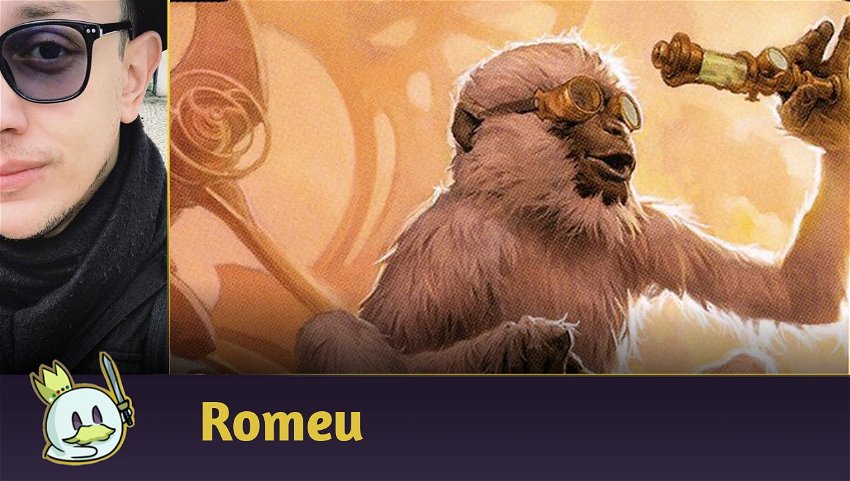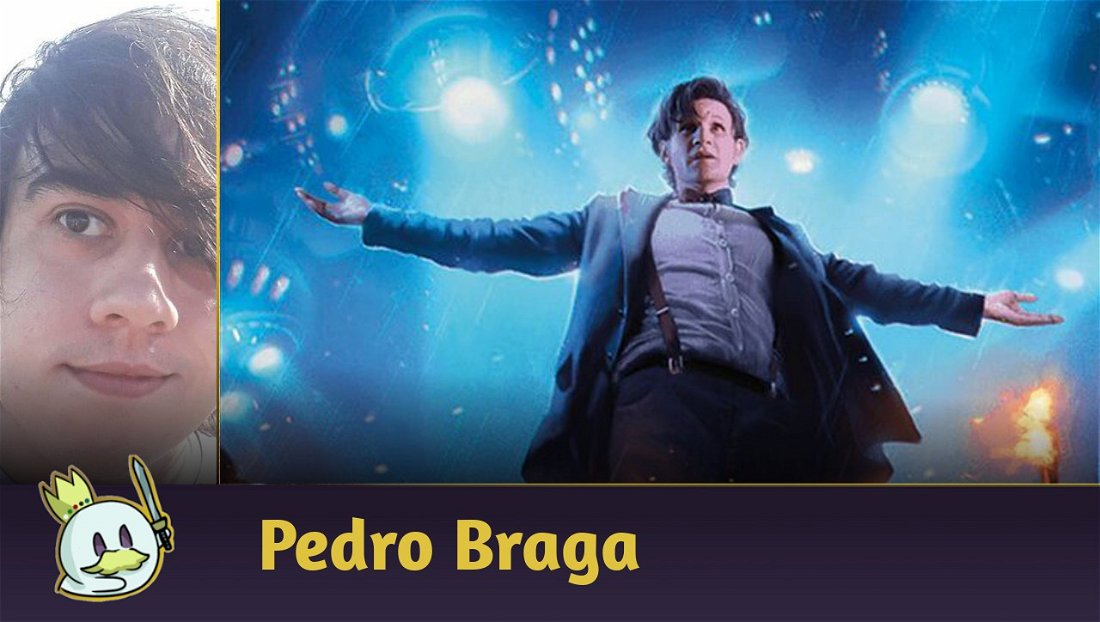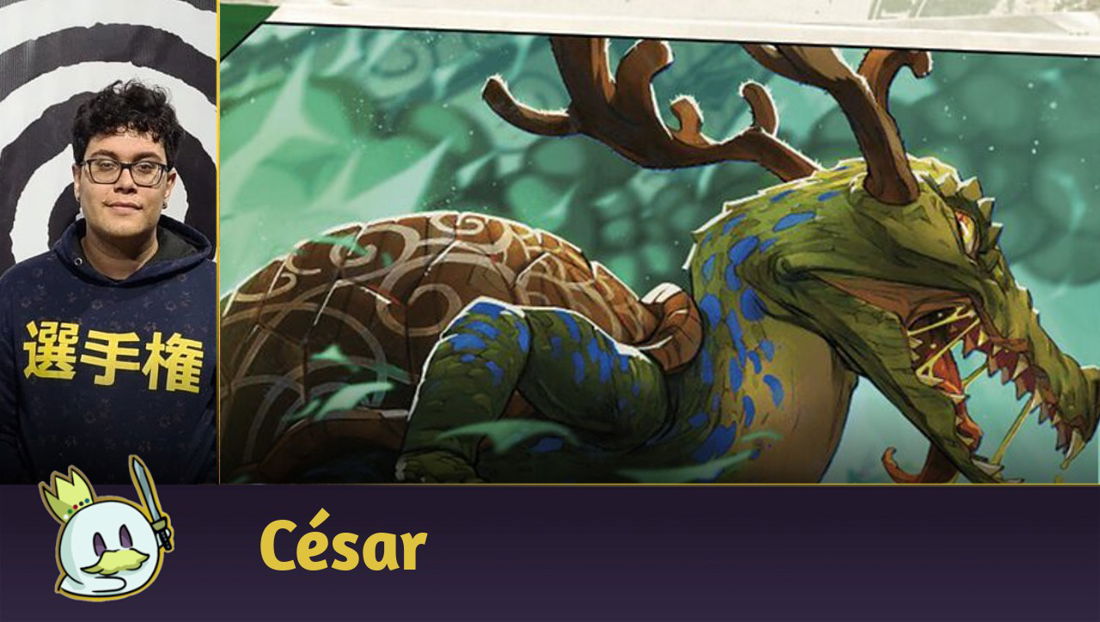This article began while playing a Domain Zoo Magic Online League. As I moved into Game 2, a trend began to repeat itself in my Sideboard plan: copies of Ragavan, Nimble Pilferer were constantly being cut as more relevant cards came in because it didn't seem relevant enough, or was easy for our opponent to respond to with favorable trades.
The next day, as I was writing my Sideboard guide, rereading my notes, I noticed how this pattern repeated itself. I started analyzing my games with other archetypes that I have experience with and which run Ragavan, and the result was very similar: copies of it were coming out against most of the main decks in the current Metagame.
Ragavan, Nimble Pilferer started to look essential in Game 1 due to its potential to tale over games against unknown opponents, but in the current conditions and strategies prevailing in the current Modern, it may be losing space in post-sideboard games. Had he, once considered one of the most broken cards in Modern Horizons II, started to become obsolete for the format?
Ragavan and the Modern Metagame
Ragavan, Nimble Pilferer was a pillar in Modern and one of the most played cards in the format, with around 35% of the Metagame share and second only to Chalice of the Void and Endurance, two key pieces to combat the main archetype responsible for its popularity: the Izzet Murktide.
Since Modern Horizons II came out and except when there was an imbalance in the format, Izzet Murktide was considered the best competitive deck in the Metagame even when it was not at the top of the results, as it had longevity in remaining among the top five archetypes of the competitive scene, making it a solid choice for any player looking for consistent long-term results.
Murktide was not the only strategy responsible for Ragavan's popularity: Rakdos Midrange (and later Rakdos Evoke), Death's Shadow, Izzet Breach, Jund Saga, Grinding Breach and Jeskai Stoneblade were other decks where it was present, almost always with four copies, and at least a third of them pulled consistent results in Leagues and Challenges.
But one day, the Middle Lands brought its nemesis and, consequently, its downfall.
Orcish Bowmasters and Positive Value
Ragavan and Izzet Murktide's downfall began with the release of a multi-format staple in Lord of the Rings: Tales of Middle-earth.

Orcish Bowmasters is considered one of the best and worst cards ever created for eternal formats in a long while.
On the one hand, it's an excellent check even against the excessive dominance of blue archetypes in Legacy for a time by punishing the format's main method of sculpting hands: cantrips - and did the same in Modern by becoming the direct punishment the format needed to reduce the consistency with which Izzet Murktide remained at the top.
On the other, it is a huge limiter for countless creatures with one toughness in competitive Magic, and limits entire archetypes merely by existing in some formats. If playing with small threats was already difficult in an environment where power level and value go hand in hand, now it was much worse because your opponent could respond with two threats or blockers and still kill one of your creatures.

Despite greatly limiting the space of X/1s, Bowmasters came out as the perfect answer against Ragavan, which became a staple because any trade against it needed to be immediate or were net positive for its controller.
The Orcs put an end to this logic. Now, in addition to dealing with the monkey, the opponent had two bodies in play to pressure or block and still punished their cantrips - it's a bit much for its cost, but it's precisely what the eternal formats needed to create a balance.
The balance, however, was short-lived in Modern.
Now with the ability to respond to Izzet Murktide's top filtering and card selection, Rakdos Evoke had become the best deck in the format through a powerful combination of Modern Horizons II's Elementals with cheap reanimation effects, with ETB effects which easily exhausted the opponent's resources while leaving a powerful threat on the battlefield.
Evoke also became the best Ragavan deck, as it could run the monkey alongside Orcish Bowmasters, in addition to being able to keep the path clear for him with Fury and Feign Death.
The Metagame Has Changed and Ragavan Doesn't Fit That Much

On December 4th Fury was banned from Modern, and in addition to the clear hit on Rakdos Evoke, its departure also changed the competitive scene by favoring archetypes with small creatures a bit more, giving greater space to Golgari Yawgmoth, one of the worst matchups to have Ragavan, Nimble Pilferer in your deck.

Since then, the Metagame has adapted with each new addition to the format lately, with the inclusion of Tishana's Tidebinder in Temur Rhinos and the brief rise of Merfolks, Agatha's Soul Cauldron leveraging Golgari Yawgmoth and Hardened Scales and, more recently, Leyline of the Guildpact turning Scion of Draco into a viable win condition outside of Domain lists.
These shifts towards more linear strategies saw archetypes like Amulet Titan, Living End and Tron grow in presence, and even Indomitable Creativity combo, which disappeared from the format with the release of The One Ring, had a return to the scenario as a response to Scion of Draco - and the one who loses in this scenario, despite presenting good results in midranges such as Rakdos Evoke and Izzet Murktide, is Ragavan, as it requires at least one favorable condition to be worth a slot in the matchup:

If we compare these conditions with the current Modern, we have these:
With recent changes to the format and its return to less interactive strategies, Ragavan has become worse because the value it extracts in many games is easy to overlook and/or has little impact as its opponents are trying to do more absurd things on their turns - the same fate that many other Modern staples have experienced.
Ragavan is still great in Game 1
This doesn't mean it's time to just run other things in its place: Ragavan, Nimble Pilferer is still a low-cost threat that demands an immediate answer to avoid taking over a game, especially in an unknown Metagame.
From local events to Regional Championships, the Modern environment is very diverse and very open and the results that emerge in Challenges and other events will not always be a perfect reflection of what you will face in the coming weeks - and no matter how stale Ragavan stays as the Metagame evolves, it will still be a viable option and almost mandatory in Game 1 for most midranges in the format.
Its current position may only be a temporary detour until new responses take Modern back to an environment where attrition-based strategies need to compete for the best deck title, greatly increasing Ragavan's value for each game.
On the other hand, the more linear the format becomes, the less important Ragavan will be, but until there is a threat as good as him for the same cost or there comes a point where Orcish Bowmasters becomes even more prevalent, I can't imagine the Rakdos Evoke or Izzet Murktide taking it from the maindeck in the coming months.
New Horizons approach
But the future is uncertain.
While we debate the space of Magic's most famous monkey in the competitive scene, there are only a few months left until the preview season for Modern Horizons III begins. With it, there is the possibility of another power creep wave taking over Modern and significantly changing the best decks.
The possibilities of this expansion remain unknown. Perhaps the one-drop that will replace Ragavan in the main Midranges will appear sooner than we imagine or, perhaps, the answers needed for his triumphant return are just a quarter away.
Until then, we'd like to hear your thoughts: has Ragavan, Nimble Pilferer's reign come to an end and made him obsolete at Modern? Or would it just be a temporary dip due to a Metagame where he can't position himself as well as he used to before Fury's ban?
Thanks for reading!













— Comments 0
, Reactions 1
Be the first to comment